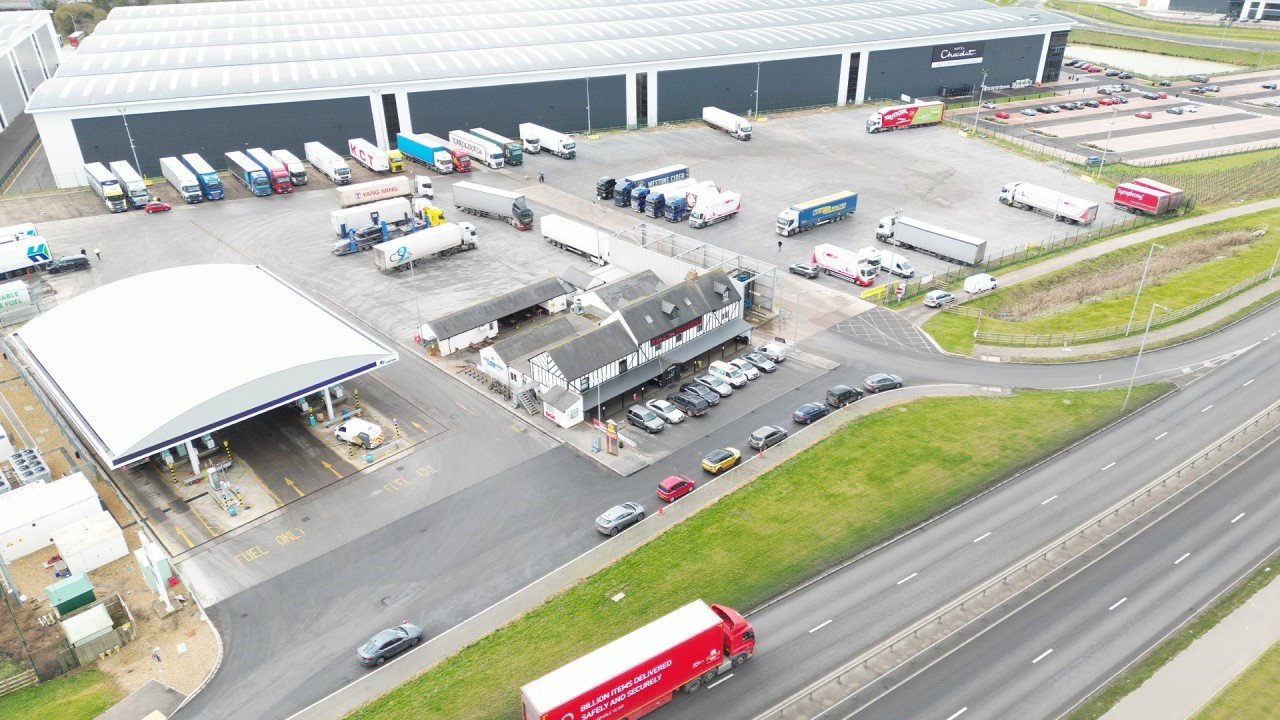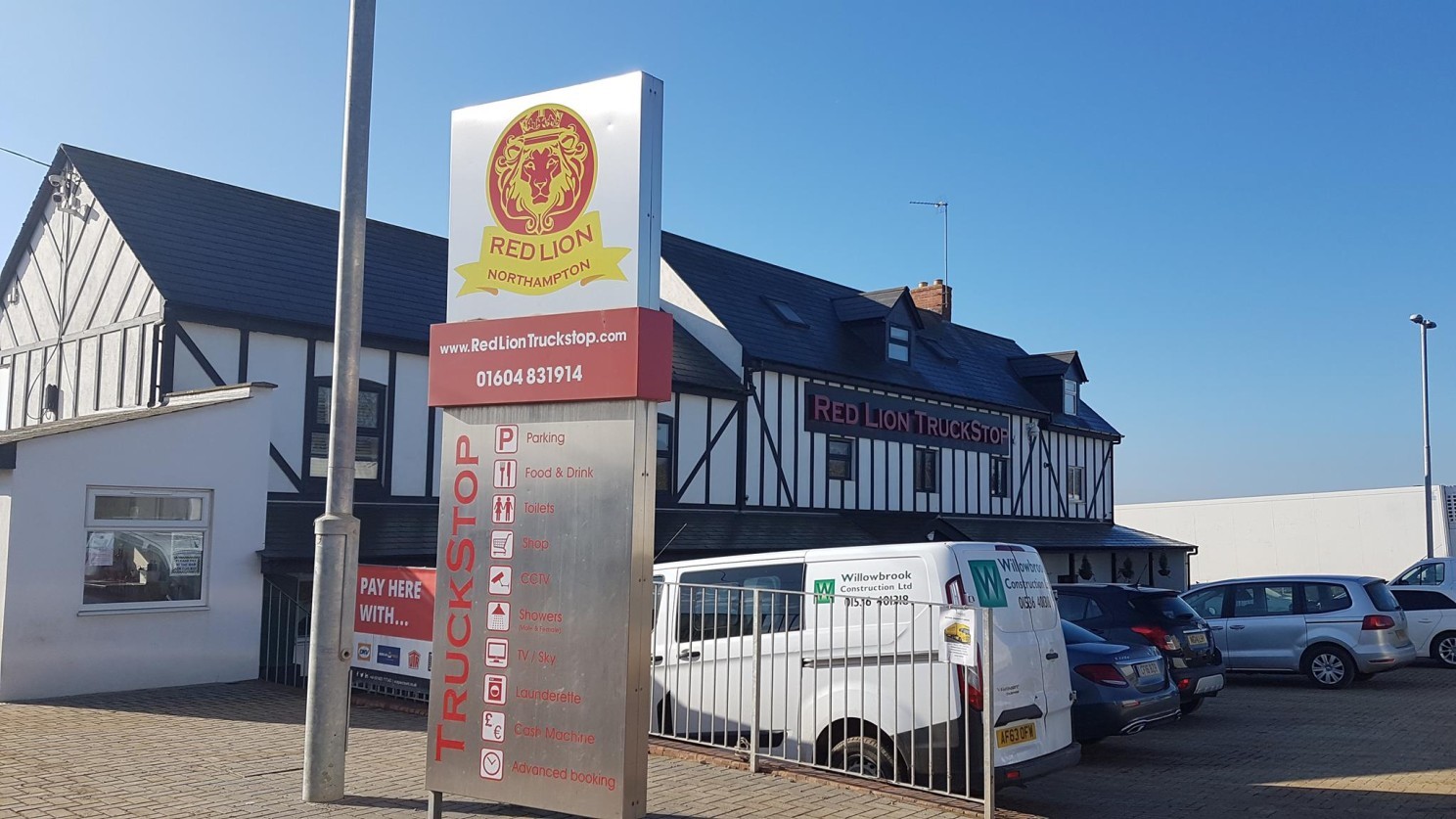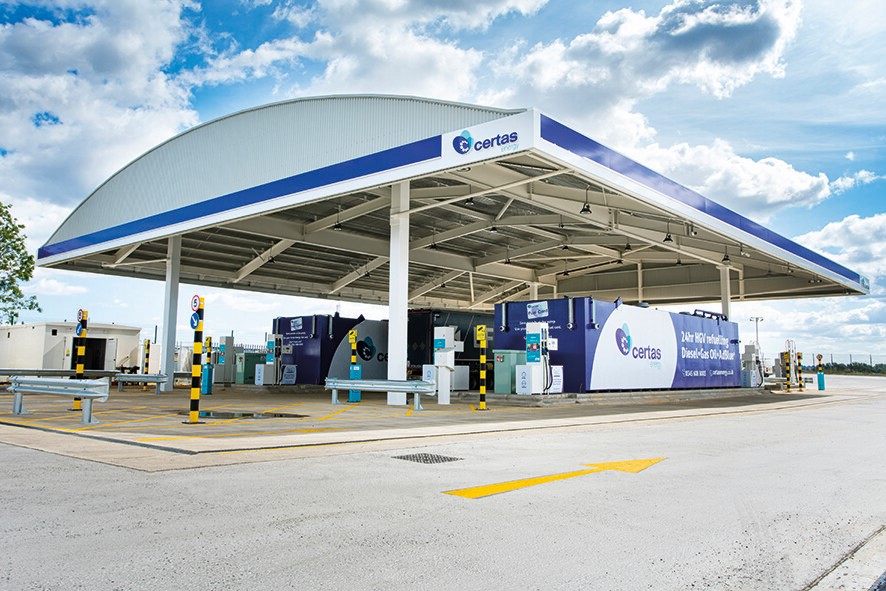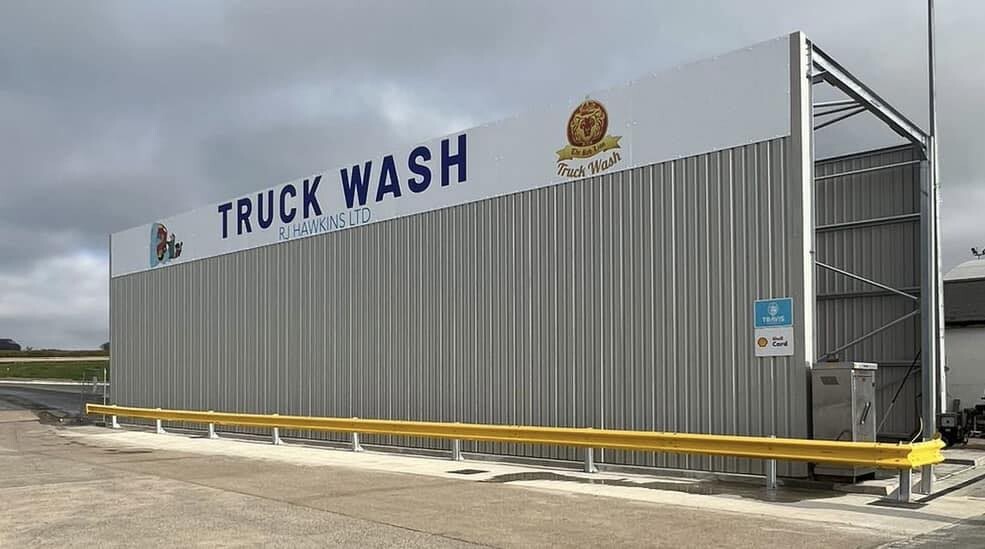
Susie Jones
Zastávka Red Lion Truckstop - vzor úspěchu
Vytvořeno: 28.08.2024
•
Aktualizováno: 28.08.2024
Jen 200 metrů od dálnice M1 na křižovatce 16 se nachází zastávka pro kamiony Red Lion. Restaurace Red Lion byla založena před více než 30 lety a stala se oblíbeným cílem řidičů. Díky své komunitní atmosféře, vynikajícímu jídlu a široké nabídce zařízení je tato oceňovaná zastávka oblíbená. Provozovatel místa Ali Sadrudin nám o něm vypráví.
"Na místo se vejde více než 200 nákladních vozidel za noc. K dispozici je vysokorychlostní čerpací stanice, která vydává nejen naftu a AdBlue, ale také stlačený zemní plyn (CNG). K dispozici je také nově vybudovaná myčka nákladních vozidel se třemi kartáči s obsluhou. V budově občanské vybavenosti se nachází restaurace a bar, prodejna příslušenství pro nákladní automobily, prádelna, herní centrum, bankomaty, sprchy a toalety s obsluhou a prostory pro pořádání akcí a setkání."

Zařízení
Někteří mohou považovat zastávky kamionů pouze za místo odpočinku pro řidiče, ale hrají také zásadní roli při zlepšování pohody řidičů. Ve společnosti SNAP víme, že je nezbytné poskytnout řidičům čisté zázemí. Co ale řidiči kamionů potřebují dál?
"Věřím, že zákazníci hledají to základní, ale správně provedené. Dobré jídlo, čisté zázemí a bezpečnost pro jejich vozidla a náklad. Pokud toto dokážete zajistit, budete mít spokojené a stálé zákazníky," říká Ali.
Letmý pohled na facebookovou stránku hotelu Red Lion vám napoví, že se touto mantrou rozhodně řídí a že to funguje. Komentáře jako "skvělá zastávka pro kamiony, nejlepší v zemi" a "možná jedna z nejlepších zastávek pro kamiony v Anglii" podporují více než 4 000 pozitivních hodnocení na Googlu.
Bezpečnost a zabezpečení
Chutná jídla a čisté zázemí však nejsou jediné věci, na které se Ali a její tým zaměřují. Velmi vážně berou také bezpečnost. Odhaduje se, že v roce 2020 došlo ve Spojeném království k více než 4 000 trestným činům v oblasti nákladní dopravy, přepravy zboží a nákladu - výsledkem byly náklady ve výši 250 milionů liber. Místa jako Red Lion zavedla bezpečnostní opatření, aby toto číslo snížila.
Ali uvádí, že "SNAP nám pomohl získat certifikaci TAPA PSR Level 3". V únoru 2023 získala společnost The Red Lion ocenění Park Mark Freight Award. Ali nám přibližuje, jaká bezpečnostní opatření byla přijata k získání tohoto ocenění.
"Stránky jsou bezpečné již od návrhu. Máme nepřetržitou ostrahu, která hlídá areál, a třetí stranu, která monitoruje kamerový systém. Kolem areálu máme třímetrový nepřerušovaný plot s pevnými kamerami, které se dívají na všechna jeho místa, takže dokáží odhalit jakýkoli neoprávněný vstup nebo poškození plotových panelů. Areál je také plně osvětlen na požadovanou úroveň luxů, kterou stanovila policie, přičemž kamery s detekcí pohybu jsou strategicky rozmístěny po celém areálu, aby zachytily jakýkoli neoprávněný pohyb a zajistily, že každá část areálu je pod dohledem. Systém ANPR pro zachycení značek vjíždějících do areálu a vyjíždějících z něj a upozornění na rychlou reakci policie, pokud by bylo potřeba ji zavolat."
Red Lion také přijal další opatření, aby se řidičky cítily při svých návštěvách pohodlně a bezpečně. K dispozici jsou například dámské sprchy, toalety a šatny. Tato opatření nezůstala bez povšimnutí, protože v lednu 2023 bylo toto odpočívadlo vyhlášeno jako nejlepší britské odpočívadlo pro řidičky nákladních vozidel.

Příjmy a expanze
Jednou z mnoha výhod pro správce lokalit používající SNAP je lepší ziskovost a optimalizace. Ali jako jeden ze zakládajících zákazníků SNAP vysvětluje, jak SNAP přinesl firmě od jejího připojení v roce 2009 dodatečné příjmy.
"Šlo o postupný proces v průběhu let, nicméně vzhledem k tomu, že se neustále mění návyky řidičů při utrácení a bezhotovostní platby, dovedu si představit, že by se nové místo, které by převzalo SNAP, okamžitě vrátilo. Přibližně 65 % celkových příjmů webu pochází ze SNAP."
Od roku 2009 se situace v oboru určitě hodně změnila. Ali vysvětluje, jak se stránky musely přizpůsobit měnícímu se odvětví a zvýšené poptávce.
"Zpočátku bylo možné na místo umístit pouze 130 nákladních vozidel za noc, ale v roce 2018 se místo rozšířilo na více než 200, aby se přizpůsobilo zvýšené poptávce," uvádí Ali. Pro řidiče a vozové parky využívající SNAP se těchto 200 míst stává snadno rezervovatelnými.
Po pouhých čtyřech letech došlo k dalšímu rozšíření areálu o novou myčku nákladních vozidel. Moderní myčka nákladních vozidel se třemi kartáči, která byla otevřena v listopadu 2022, je vhodná pro většinu vozidel LGV.

Připojení k SNAP jako servisní partner
Připojením k SNAP se vaše lokalita dostane do povědomí 160 000 řidičů a 7 000 vozových parků. Zastávkám pro nákladní automobily, jako je Red Lion, které se neustále snaží nabízet nové iniciativy a zařízení pro své zákazníky, poskytuje SNAP tuto příležitost.
"SNAP umožnil webu nabídnout alternativní způsob platby, který může být pro zákazníka jen přínosem a přilákat ho na stránky," říká Ali.
Výhody SNAP
Účet SNAP využívá více než 160 000 řidičů. Proto jsou vysoké standardy zásadní. Přestože servisní partneři přijímající platby v rámci účtu SNAP jsou nezávislé firmy, každé místo kontrolujeme a ujišťujeme se, že splňuje naše standardy. Kromě toho je náš síťový tým k dispozici, kdykoli je třeba.
"SNAP nás vždy podporoval od prvního okamžiku, kdy jsme se k němu připojili," říká Ali.
Na otázku, co je pro ně na společnosti SNAP nejlepší, Ali odpověděl: "Je to úroveň služeb, které překračují rámec a přizpůsobují systém prodeje vstupenek našim požadavkům."
A jeho rada pro majitele parkovišť kamionů, kteří uvažují o otevření své provozovny řidičům SNAP?
"Udělej to! Proč byste nechtěli přivést na své stránky další zákazníky?"
Zaregistrujte se do systému SNAP
Chcete-li zlepšit svou ziskovost a optimalizovat provoz svých stránek, přejděte na stránku snapacc.com.



